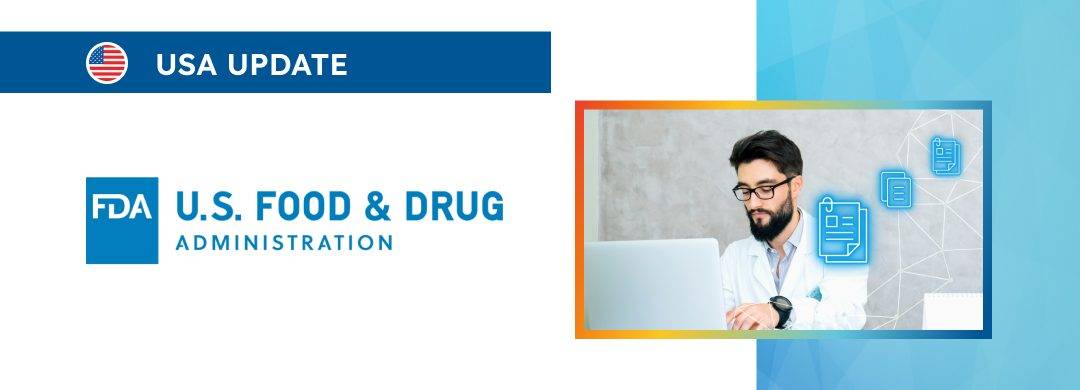The new article highlights the aspects of the documentation the authority expects to be submitted for review.

Table of content
The Food and Drug Administration (FDA or the Agency), the US regulating authority in healthcare products, has published a draft guidance document dedicated to real-world evidence to support regulatory decision-making for medical devices.
Once finalized, the guidance will provide an overview of the applicable regulatory requirements, as well as additional clarifications and recommendations to be taken into consideration by medical device manufacturers and other parties involved to ensure compliance with it.
At the same time, it is essential to mention that provisions of guidance documents issued by the FDA are non-binding in their legal nature, nor are they intended to introduce new rules or impose new obligations.
Moreover, the authority explicitly states that an alternative approach could be applied, provided such an approach is in line with the relevant legislation.
It has been agreed with the authority in advance.
Introduction
The present guidance document outlines the recommended practices for submitting documentation that utilizes Real-World Data (RWD) to create Real-World Evidence (RWE) for medical device regulatory purposes.
The scope of this document covers various types of submissions to the Center for Devices and Radiological Health (CDRH) and the Center for Biologics Evaluation and Research (CBER).
These submission types include but are not limited to, pre-submissions, 510(k) submissions, Premarket Approvals (PMAs), Biologics License Applications (BLAs), Humanitarian Device Exemptions (HDEs), De Novo classifications, Investigational Device Exemptions (IDEs), post-approval study PMA supplements, 522 postmarket surveillance studies, CLIA Waiver by Applications, and Dual submissions.

Regulatory Submission Cover Letters
First of all, the FDA expects sponsors to identify the inclusion of RWD and RWE in the cover letter of their regulatory submission.
This practice is intended to streamline the review process and enhance the internal tracking of submissions.
Key elements recommended for inclusion in the cover letter are:
- Explicit statement of the purpose of RWE within the context of the submission, providing examples as outlined in Section IV.A.
- A comprehensive description of how the RWE integrates into the total clinical evidence presented, explaining its role in enhancing the interpretability of primary evidence, establishing performance goals, or supplementing existing clinical data.
- Detailed information about the study design employed to generate RWE from RWD, including study types and methodologies referenced in Section VI.A.
- A thorough disclosure of RWD sources, specifying details such as the data source name, provider, version number, and the dates related to data extraction.
Fit-For-Purpose Assessment
Including RWE in regulatory submissions mandates a fit-for-purpose assessment of the RWD. This assessment focuses on evaluating the data’s relevance and reliability in the context of the intended study.
Essential elements of this assessment include:
- An in-depth analysis of key relevance and reliability factors for the RWD-based study.
This covers such aspects as data availability, data linkages, timeliness, data accrual, data quality, integrity, study purpose, specific data elements, generalizability, assessment of confounding factors, timing of data availability, and the alignment of the study sample with the target population. - Additional context about the role of RWE within the entire spectrum of clinical evidence submitted to the FDA.
This includes a summary of the total relevance and reliability of the RWD in addressing the study question and any unique considerations related to the specific RWD source.
Protocol for Studies Generating RWE
According to the guidance, the authority also expects the submission of a detailed study protocol for RWE-generating studies, akin to traditional clinical trials.
The protocol should encompass:
- A finalized protocol and analysis plan was established before reviewing outcome data and conducting prespecified analyses.
- Document any protocol revisions, including the dates and rationale for each change.
- Comprehensive details such as the study synopsis, background, purpose, study design, representation of source data, device description, study aims, objectives, design diagrams, data sources, data elements, statistical and data analysis plans, data management, quality control, sample size calculations, statistical power, human subject protection details, adverse event reporting plans, milestones, timeline, auditing, monitoring plans, data validation or adjudication studies, and the data dictionary used.
Report Submission
The document also mentions that the report, similar to those in traditional clinical studies, should be included in the regulatory submission.
Key aspects of the report are:
- A thorough account of any deviations from the protocol, including the reasons for these deviations.
- Detailed study results, discussions, and conclusions, mainly focusing on how the RWE supports the submission’s objectives.
- Information on the data extraction date, updates on all protocol elements to reflect the actual conduct of the study, and justifications for any modifications to the protocol, ensuring that these changes do not compromise the validity of the RWE.
Additional Information in Regulatory Submissions
The document further outlines the scope of additional information to ensure the authority has sufficient data for review.
According to the guidance, additional information to be provided in submissions that include RWE comprises:
- The ClinicalTrials.gov National Clinical Trial (NCT) Number, if relevant.
- Detailed informed consent and Institutional Review Board (IRB) documentation.
- A list of investigational sites with comprehensive details like mailing addresses, contact information, and names of investigators.
- Templates of Case Report Forms developed by the sponsor are particularly useful when Electronic Health Records (EHR) or claims data are not directly mapped to the dataset from the source.
Conclusion
The present guidance describes a structured framework for incorporating RWD and RWE into regulatory submissions for medical devices.
It emphasizes the necessity of clear, detailed documentation, rigorous assessment of RWD, meticulous study protocol development, and thorough reporting.
These practices are vitally important for facilitating an efficient review process by the FDA and ensuring that submissions employing RWD and RWE are held to the highest regulatory compliance standards.
How Can RegDesk Help?
RegDesk is a holistic Regulatory Information Management System that provides medical device and pharma companies with regulatory intelligence for over 120 markets worldwide. It can help you prepare and publish global applications, manage standards, run change assessments, and obtain real-time alerts on regulatory changes through a centralized platform. Our clients also have access to our network of over 4000 compliance experts worldwide to obtain verification on critical questions. Global expansion has never been this simple.

